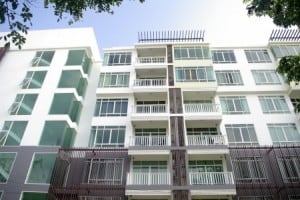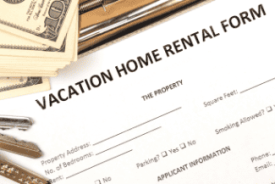4 Trends Shaping Apartment Finance

LOW INTEREST RATES
Now may be the ideal time for borrowers to consider refinancing their multifamily mortgage loans. Following the Federal Reserve’s announcement earlier this year that there would be no further rate hikes in 2019, many experts are now predicting that the Fed will soon cut rates.
With the 10-year Treasury rate currently hovering around 2 percent, interest rates on multifamily loans are likewise trending low.
For instance, according to Marcus & Millichap, as of July 3, 2019, the fixed rate for multifamily loans ranged from 3.40 percent to 4.93 percent, depending on the loan amount, term (five-year, seven-year or 10-year) and the type of lender (agency lenders or portfolio lenders).
Refinancing can be a great strategy to consolidate multiple debts, improve cash flow, distribute equity to investors and free up capital for the current project or yet another investment.
Rate-and-term and cash-out refinancing are options well worth exploring, regardless of the current stage of the project—whether it be in the acquisition-to-entitlement phase, the initial breaking of ground, the mid-construction stage, or the post-completion period (including any further renovations).
FANNIE MAE’S MULTIFAMILY SMALL LOANS PROGRAM
Not only are lower interest rates spurring more activity, but higher available loan amounts are also making multifamily financing more accessible.
Specifically, in February 2019, Fannie Mae announced two significant changes to its Multifamily Small Loans Program, which is already well regarded for its competitive interest rates. First, the maximum loan amount doubled from $3 million to $6 million. Second, four new eligible markets were added to the program—Denver, Miami, Minneapolis, and Salt Lake City.
These changes will open the door of opportunity for many multifamily investors looking to enter this market, particularly in the area of affordable housing for working families. This dovetails nicely with the growing demand this year for Class B and C properties. According to Marcus & Millichap, Class A properties (luxury rentals) will see higher vacancy rates this year, while Class B and Class C properties (more affordable rentals serving the traditional workforce) will see lower vacancy rates.
GREEN BUILDING ADVANTAGE
Besides affordable housing, another trend on the rise is sustainable housing. According to the U.S. Green Building Council, 2018 saw the highest number of U.S. apartments certified green.
In the mortgage lending context, going green can equate to thousands of dollars in savings over the life of the loan.
First, many cities have ordinances that require developers to pay the city a hefty fee (usually equal to a percentage of construction costs) unless the building satisfies certain green standards.
Second, many lenders offer enticing incentives for going green. Because loans on green buildings tend to be higher performing loans with lower default rates, lenders are favoring green projects more and more. Fannie Mae and Freddie Mac offer preferential loan pricing to multifamily developers who commit to go green, as well as to multifamily owners of properties that are already certified green. For instance, under Fannie Mae’s “Green Building Certification Pricing Break” program, if the building is certified green, the borrower receives an interest rate reduction of 0.10 percent.
LOCATION, LOCATION … FLORIDA
All signs point to a very robust 2019 for the multifamily market in Florida. In fact, according to Freddie Mac, of the top 10 metropolitan areas nationwide with the highest expected rental revenue growth in 2019, five of those areas are in Florida—Tampa, Jacksonville, Orlando, West Palm Beach, and Ft. Lauderdale.
Similarly, the Orlando and Tampa metropolitan areas zoomed up the rankings in Marcus & Millichap’s 2019 National Multifamily Index due in part to the recent robust job growth in those areas.
Miami is also making waves. According toDodge Data & Analytics, Miami was among the top five metropolitan areas with the highest dollar amount of multifamily construction starts in April 2019.
Americans over the age of 60 are the fastest growing group of renters—growing by 43 percent in the last decade. As Florida is home to many of the oldest cities in the country, this is another opportunity for growth in Florida.
In short, now is a great time for investors and developers to enter or reposition themselves in the multifamily market. Source: multihousingnews.com















 Accessibility
Accessibility